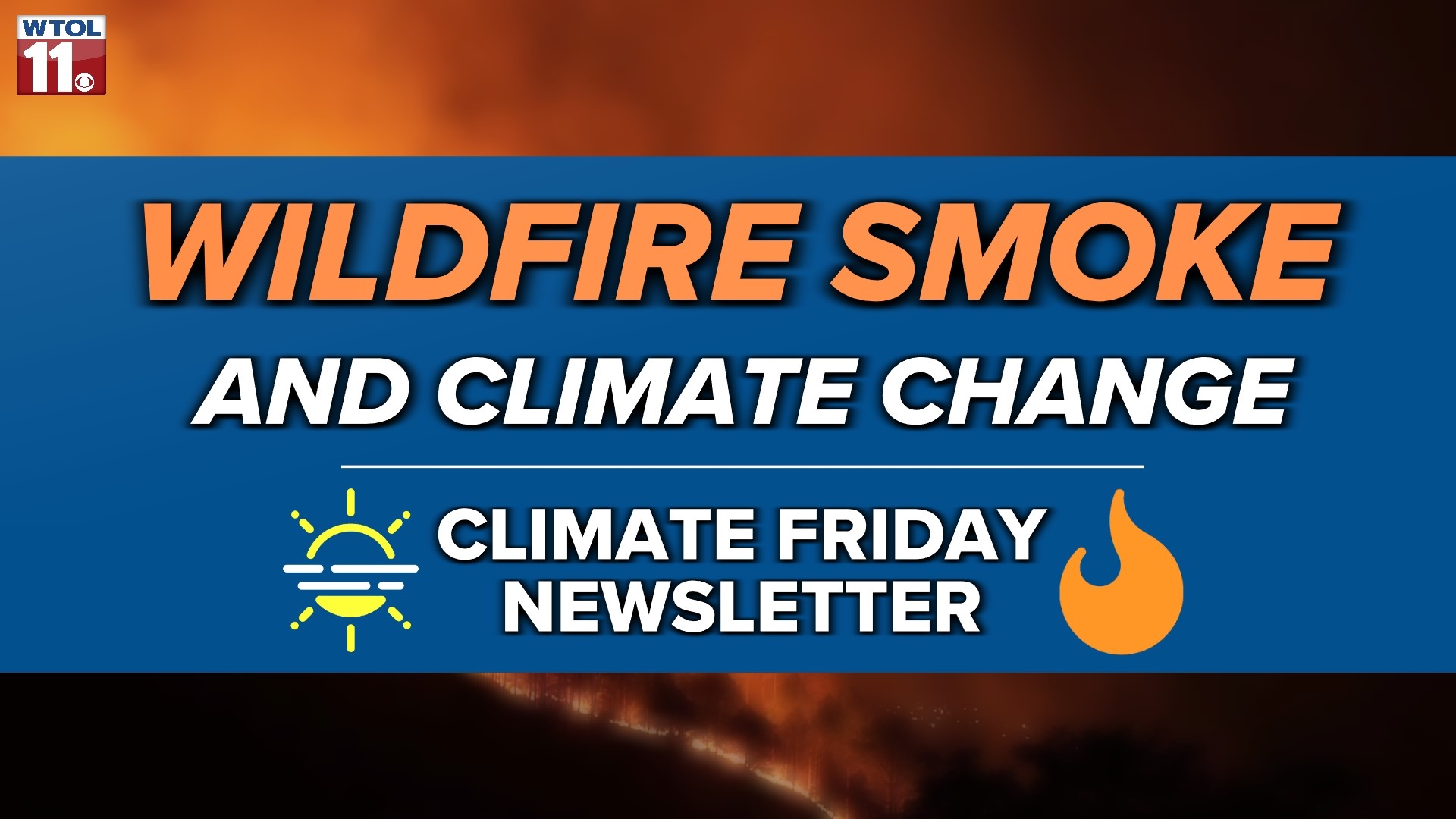TOLEDO, Ohio — Canadian wildfires are impacting Ohio and Michigan this week, reducing air quality and contributing to hazy skies. This wildfire smoke deteriorated air quality across North America, especially major metropolitan areas along the East Coast like New York.
Though the local impacts of the Canadian wildfires will briefly subside this weekend, additional fires will continue to affect conditions here at home throughout the summer. With wildfire season ramping up, the next few months may bring frequently hazy conditions and lower air quality.
Climate change is making this the new norm, and wildfire smoke is becoming an inevitable part of the summer season. In this week's edition of Climate Friday we'll explain the causes of these wildfires and what you can do to minimize the impacts.
Hundreds of wildfires across western and central Canada have proliferated due to hot and dry weather conditions, impacting tens of millions of individuals across North America. The Canadian wildfire season has ramped up more rapidly and severely than ever before in modern history, in part due to meteorological factors and climate change.
Over 3 million hectares of land - larger than all of northwest Ohio - have burned due to hundreds of fires in Canada. While some fires spawn naturally due to lightning, for instance, others can be sparked by human causes like cigarettes or camp fires.
Regardless of the origins, these fires have proliferated due to persistent heat and drought. All 10 Canadian provinces are currently experiencing drought conditions and above-average temperatures.
Historic May heat impacted much of North America, especially the Canadian prairie. This map shows May temperature anomalies, or deviation either above or below normal.

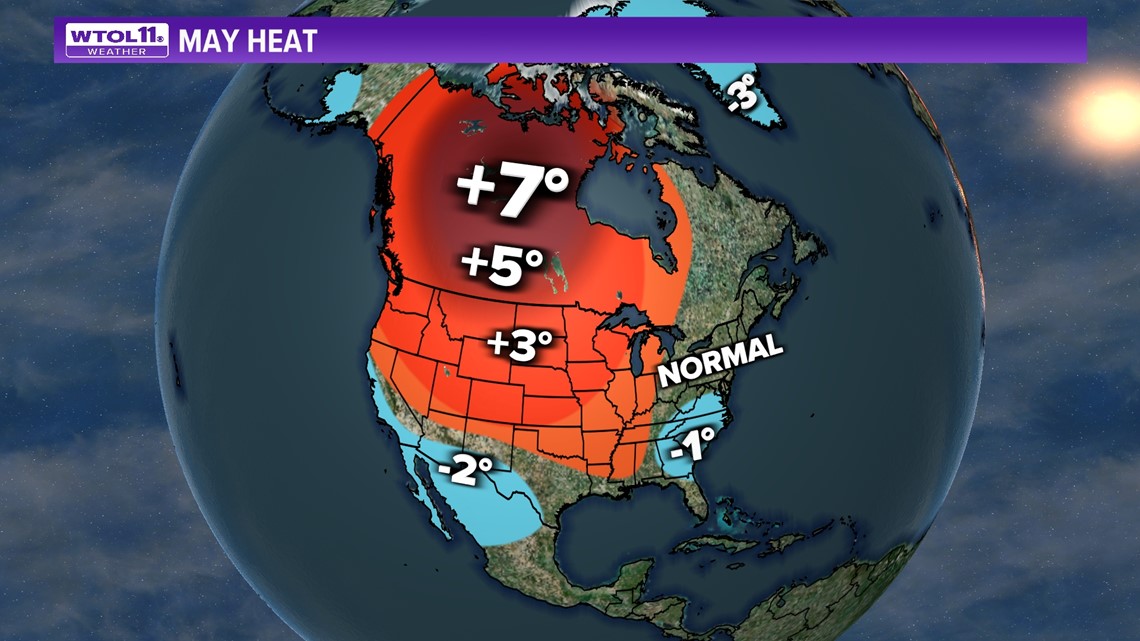
Much of western Canada experienced temperatures 6-7 degrees hotter than normal throughout the month of May. Most of the northwestern United States also felt a mild May with temperatures around 3 degrees above average.
Despite the extreme heat in the northwest, May temperatures here at home were about on par with what you'd expect for May. Locations in the southeast and in parts of northern Mexico were slightly cooler than average. Heat is one key variable that enables wildfires to develop and proliferate, and this historically hot May is largely to blame for the recent wildfire outbreak.
In addition to heat, drought fuels fire formation and proliferation. Persistent drought across both Canada and the U.S. has enabled wildfires to spread rapidly. According to the Canada Drought Monitor, all 10 provinces are experiencing drought conditions due to the persistent lack of rainfall.
Here at home, the latest drought monitor just upgraded the region to moderate drought conditions, representative of a historically dry stretch of weather. If you're reading this on Friday, today is the 20th consecutive day without a drop of rain, a trend that will continue into the start of the weekend.
This drought now tops the list as the longest dry spell ever experienced during the spring season in Toledo. Historically, several stretches of dry days during the summer have surpassed this streak. Drought conditions provide a key second ingredient for wildfire spread, and dry landscapes are more susceptible to flames.
This combination of hot and dry weather over weeks and months has enabled Canadian wildfires to proliferate. Dry weather will likely continue through the month of June, enabling additional wildfire development and making it more difficult to extinguish ongoing fires.
Climate change is making these weather conditions more common and severe, directly exacerbating both natural and manmade wildfires. It's no secret that the world is getting warmer, and this historically hot May is a testament to the overall body of evidence showing an increase in global temperatures.
In Toledo, the summer season has grown two degrees warmer in the last decade alone, and during the middle of July, our average high temperature is now 87 degrees. This warming trend has also impacted western states and Canadian provinces already more susceptible to wildfire development.
States like California and Oregon and provinces such as Alberta and British Columbia are growing hotter and drier, thus experiencing more frequent and intense wildfires. Climate change has a direct link with wildfire development and spread, largely due to increased prevalence of heat and drought.
So how have the western wildfires impacted conditions here at home? You've likely seen, smelled and felt the effects of this Canadian smoke.
Have you noticed the hazy skies and orange sunrises and sunsets? Even on a sunny day, wildfire smoke obscures the sky, contributing to a milky, obscured, translucent appearance. This graphic compares a normal sunset with bright sunshine and a clear sky to a smoky one featuring hazy sunshine and reddish orange hue.

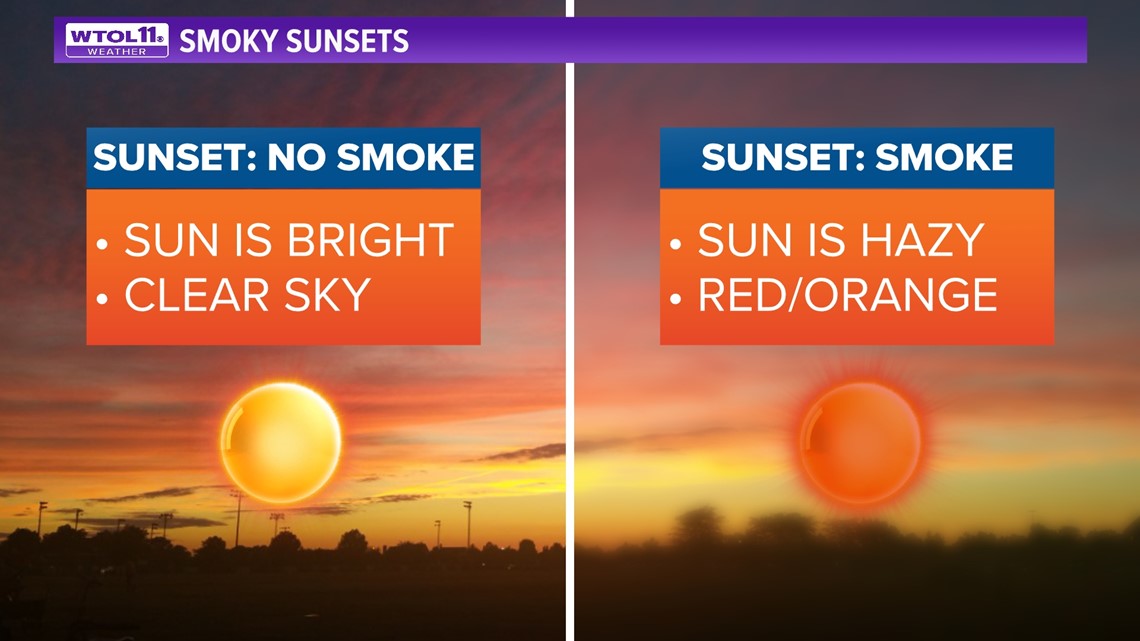
Why do smoke-filled sunrises and sunsets look to hazy? It all has to do with how sunlight interacts with the wildfire smoke. The Sun emits all wavelengths of light, which render all the colors of the rainbow when refracted, or bent by air molecules.
The particles of wildfire smoke scatter shorter wavelengths associated with colors like yellow, green, blue, and violet. Longer wavelengths of light, tied to colors like red and orange, pass directly through the smoke layer, amplifying the rusty color of smoky sunsets.
This optical phenomenon occurs due to the interaction of smoke particles and the Sun's rays.

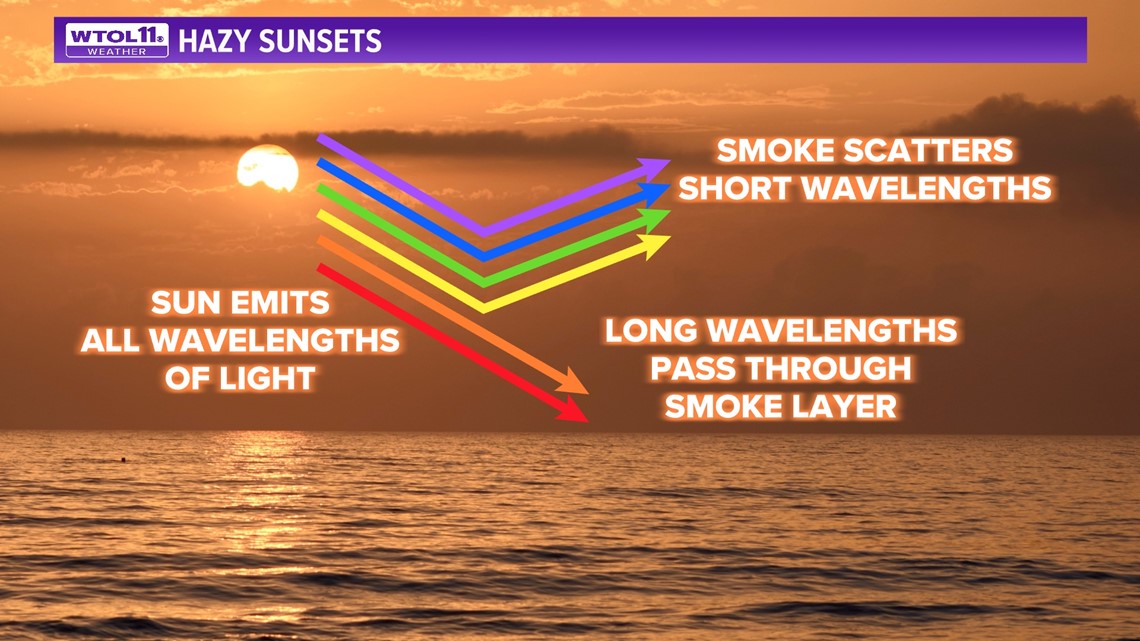
While smoke particles vary in size, fine particles smaller than 2.5 microns cause the greatest health consequences as they penetrate the lungs more easily. To give you an idea of how small these particles are, a strand of human hair typically ranges from 50-70 microns.
These minute particles less than 5% of the width of human hair can be inhaled more deeply into the lungs, posing respiratory concerns, especially for sensitive and elderly individuals. Some symptoms associated with prolonged exposure to wildfire smoke include itchy eyes, fatigue, sore throat and trouble breathing.
Prolonged exposure and outdoor exercise can make these symptoms more pronounced.
So is the air in northwest Ohio dangerous? Air Quality Index, or AQI, measures the relative cleanliness or pollution of the air you breathe. This graphic explains how varying AQI levels impact your health.

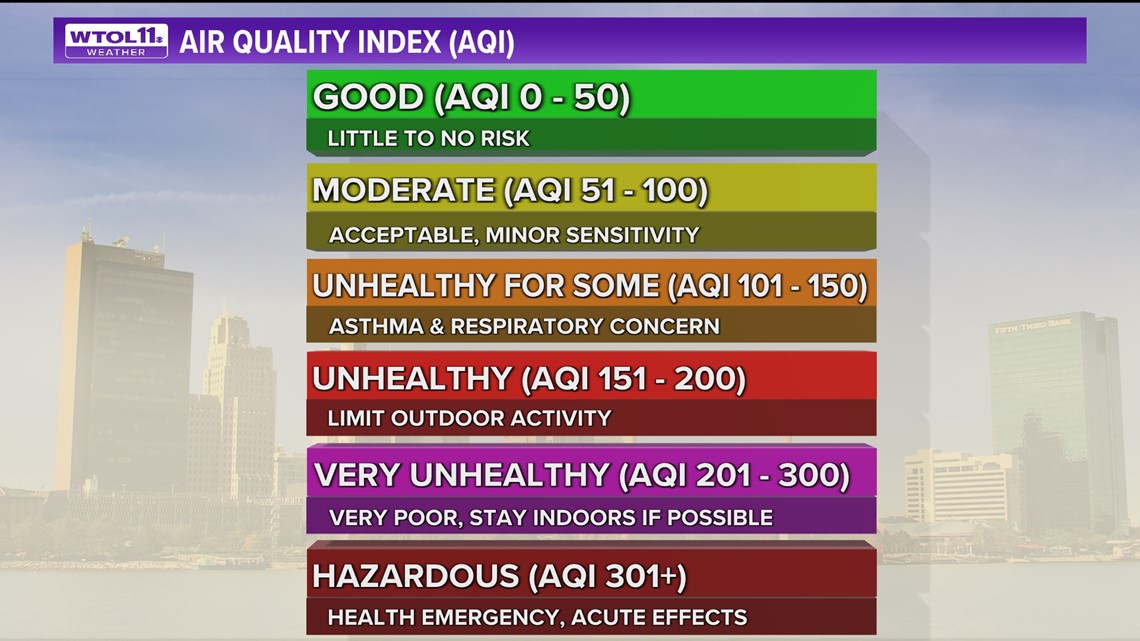
AQI levels under 50 represent clean air with no health risks, even to sensitive individuals. As AQI approaches 100, some symptoms may develop in the elderly and those with medical conditions.
When AQI exceeds 150, all individuals should limit outdoor activity. An AQI in excess of 300 represents an imminent health risk, and wearing a mask outdoors is recommended.
Finally, an AQI of 400 or more tops the charts as the most dangerous, causing a health emergency with acute effects even with brief exposure. While AQI over 400 is extremely rare, many major East Coast cities experienced this severe level of pollution this week due to Canadian wildfires.
New York City experienced historic pollution as AQI levels soared to the 400s, obscuring the city skyline. While our air quality here at home has only been a fraction of that, AQI levels have exceeded 150, impacting elderly individuals and those with respiratory conditions.
AQI levels will again increase Friday afternoon, and Friday will likely bring the worst of the wildfire impacts locally. The hour-by-hour smoke forecast reflects slight improvements this weekend as a more active jet stream develops and rain chances return Sunday.
The AQI will likely continue to improve into next week, but the summer season will likely bring periodic smoky skies as wildfire season reaches its peak in the western U.S. and Canada.
Regardless of the exact cause of wildfires, climate change is making them far worse and more frequent. These tangible health risks are a clear representation of the growing threat of climate change.
While many folks view rising temperatures without real-world consequences, this week's wildfire smoke has proven the imminent risk of global warming. Though we will finally feel some reprieve from the smoke this weekend, hazy skies may be a prevailing story this summer as new fires develop.
Stay tuned to the WTOL 11 Weather team for the latest and subscribe to the Climate Friday Newsletter for new content every Friday.
RELATED VIDEO

